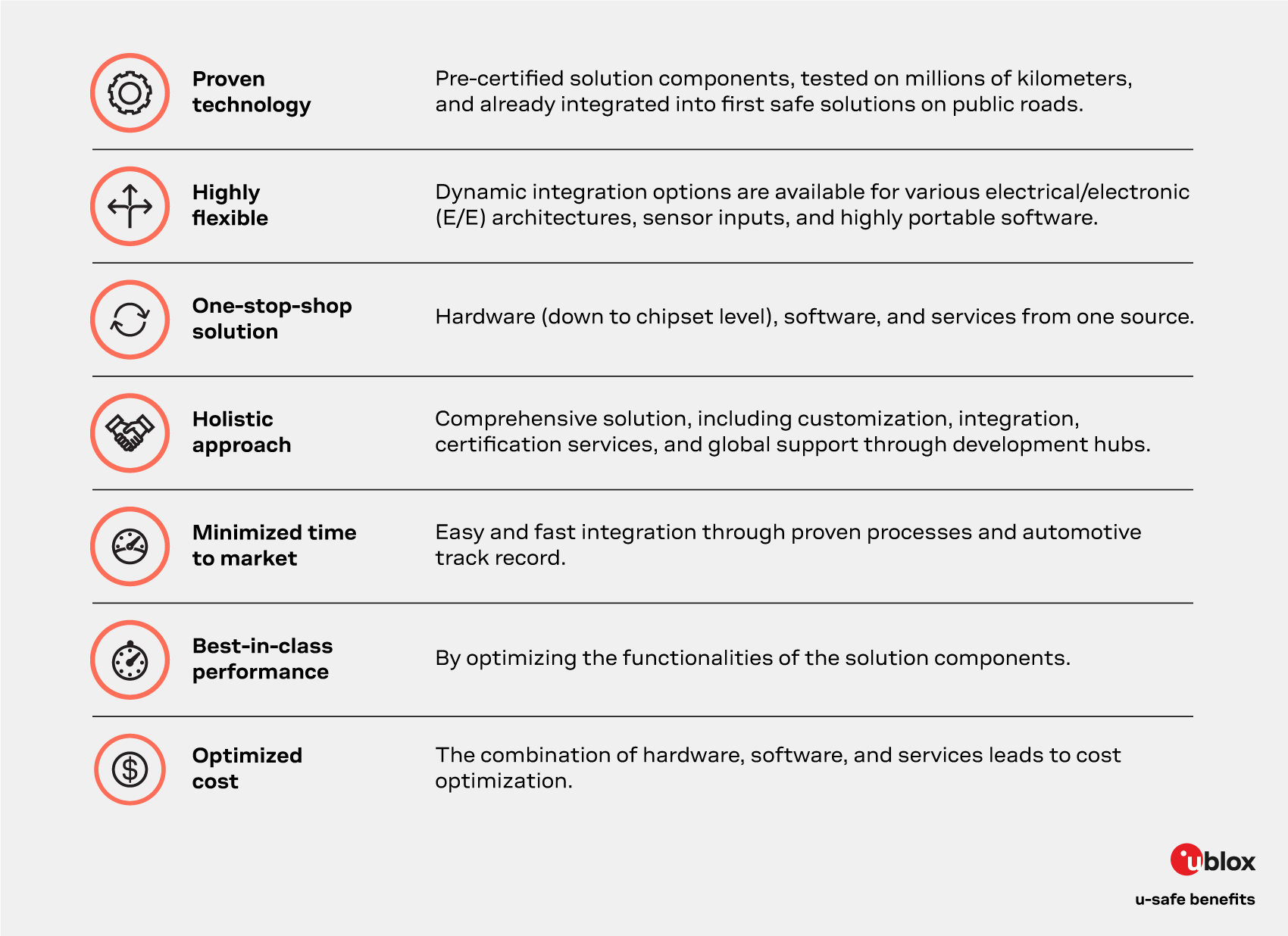
- Support portal
- Evaluation Kits and partner products
u-blox Support
- Product documentation
Documentation
- Investor relations
Investor relations
Autonomous driving promises to revolutionize the automotive industry. However, before any further developments, it is fundamental to ensure safety. While humans deal with risks daily, every autonomous vehicle accident has enormous implications. Therefore, assuring safety is paramount.
The imminent arrival of autonomous vehicles is reshaping a longstanding priority of the automotive industry: the safety of vehicle occupants. In a new approach, safety is becoming more holistic, focusing on both the vehicle and its environment.
Functional safety is at the core of the former, while integrity pertains to the latter. Both rely heavily on the foundation of safe positioning, essential for calculating safe trajectories.
Safe positioning means providing a high-accuracy and high-integrity positioning solution that complies with functional safety requirements.
The vehicle. For new-generation vehicles, preventing accidents and protecting drivers, occupants, and other road users depends on detecting the vehicle’s hardware and software malfunctions. Therefore, their design and implementation should incorporate safety measures.
Functional safety aims to minimize the risks associated with the vehicle's hardware, which can lead to accidents and physical injuries. Hardware malfunctioning can originate from two distinct sources. First, systematic hardware faults may occur during the development and manufacturing of a vehicle. Second, hardware faults may also arise due to aging or unexpected defects in components.
ISO 26262 is a risk-based standard that addresses possible hazardous situations caused by the malfunctioning behavior of electronic and electrical systems in vehicles. It formalizes and provides a structured approach to automotive systems' functional safety.
The environment. AD applications gather sensor data from multiple sources, such as Radar, Lidar, video, ultrasonic, camera, GNS S, IMU, map data, etc. With these inputs, perception and location algorithms provide a comprehensive view of the vehicle’s surroundings and precise location, which in turn is used to calculate a safe trajectory. The catch here is that sensors are not always 100% accurate, leading to uncertainties that impact confidence in the data.
The collective assessment of sensor data in relation to the overall system and its environment is known as SOTIF (Safety of The Intended Function). In the context of positioning, integrity is thus a measure of trust for information supplied by any positioning solution.
SOTIF is governed by ISO-21448, which provides guidance and requirements for ensuring the safety of intended functionality in the field of automated and autonomous vehicles.
u-safe is a pre-certified ISO-26262/ASIL-B end-to-end positioning solution designed to accelerate the adoption of autonomous vehicles. It comprises a correction service and on-board positioning engine already deployed on the road today, providing high-performance and reliable lane positioning for leading global OEMs. Together with our functional safety chipset and custom integration expertise, u-safe offers an end-to-end solution aimed at future-proofing advanced driver assistance systems (ADAS) architectures.

u-blox and GMV joined forces to deliver cutting-edge safe positioning solutions for automotive applications.

A unique combination of proven market-leading components that offer an end-to-end solution for safe vehicle positioning.
